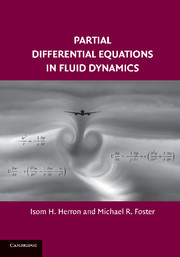Book contents
- Frontmatter
- Contents
- Preface
- Acknowledgments
- 1 Review of Analytic Function Theory
- 2 Special Functions
- 3 Eigenvalue Problems and Eigenfunction Expansions
- 4 Green's Functions for Boundary-Value Problems
- 5 Laplace Transform Methods
- 6 Fourier Transform Methods
- 7 Particular Physical Problems
- 8 Asymptotic Expansions of Integrals
- Index
3 - Eigenvalue Problems and Eigenfunction Expansions
Published online by Cambridge University Press: 06 July 2010
- Frontmatter
- Contents
- Preface
- Acknowledgments
- 1 Review of Analytic Function Theory
- 2 Special Functions
- 3 Eigenvalue Problems and Eigenfunction Expansions
- 4 Green's Functions for Boundary-Value Problems
- 5 Laplace Transform Methods
- 6 Fourier Transform Methods
- 7 Particular Physical Problems
- 8 Asymptotic Expansions of Integrals
- Index
Summary
Preamble
In the twentieth century, there were a number of innovations in applied mathematical techniques. Some had their origins in the years before. Rayleigh seems to have begun many of these innovations that were taken up by others in the twentieth century. Rayleigh's criterion establishes the instability of a rotating fluid. Based on elementary physical arguments, he was able to conclude (loosely) that the flow configuration is stable when the square of the circulation increases outward. In the early years of the twentieth century, work was done to put many of these physical arguments on a stronger mathematical footing. One of the techniques that has proven to be useful is the study of eigenvalue problems for differential equations. This technique relates particularly to the method of normal modes of vibration of a physical system and to discrete–mode instabilities of fluid flows. Many examples of this latter application, which is given some limited discussion in this chapter, may be found in (Chandrasekhar) and (Drazin and Reid), for example.
The general mathematical ideas were first developed by Sturm and Liouville, but Fourier had laid much of the groundwork in his theory of heat conduction. This “continuous” treatment, by means of differential equations, has discrete analogs as well, in the theories of matrices and of particle systems.
Information
- Type
- Chapter
- Information
- Partial Differential Equations in Fluid Dynamics , pp. 62 - 105Publisher: Cambridge University PressPrint publication year: 2008
